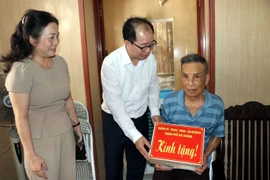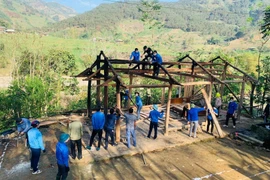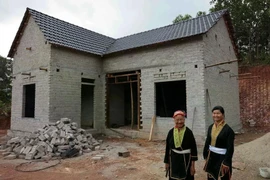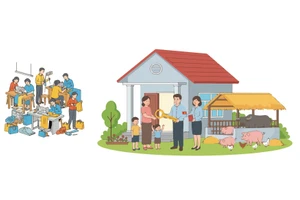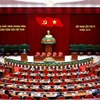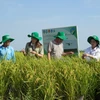Kon Tum (VNA) – The Central Highlands province of Kon Tum is mobilising its entire political system to support disadvantaged residents, especially those from ethnic minority groups, in building new, clean, and stable homes.
Kon Ray district stands out as a successful example, having completed the replacement of 155 dilapidated houses ahead of schedule.
Turning dreams into reality
Y Buc, a 63-year-old woman from Village 3, Dak Pne commune, Kon Ray district, had long lived alone in a makeshift shelter under challenging conditions. As a member of a particularly disadvantaged ethnic minority household, she had never imagined owning a proper home. With a goal to help people like her settle down and have better lives, Dak Pne commune authorities developed a plan to support her in replacing her deteriorated house.
She shared her joy, saying that that thanks to support from the Party and State, she can finally realise what once felt like a distant dream. She contributed 40 million VND (1,533 USD) of her lifetime savings, while her neighbours helped her with labour to build a new 50sq.m house.
A district-wide review identified 155 households in need of housing assistance, including 118 poor, 33 near-poor , and four policy-beneficiary families.
Nguyen Van Thuy, Vice Chairman of the Kon Ray district People’s Committee, stated that communal authorities were directed to act decisively, ensuring support reached the right people and was properly allocated. Leaders of local party committees and governments were made directly responsible. Mass organisations and associations were mobilised to contribute labour, and party members were assigned to support each household throughout the process.
Communes adopted creative approaches - they consulted with families to determine their own contribution, encouraged community participation, coordinated land surveying and paperwork for land-use certification, and swiftly removed legal or procedural barriers. As a result, housing reconstruction efforts moved quickly and faced minimal obstacles.
Community power at the core
Strong advocacy and public awareness campaigns helped generate broad community consensus. Many families, upon receiving government aid, voluntarily contributed additional resources—some offering over 100 million VND—to build new homes.
For example, A Mau’s family in Dak Pne commune received 30 million VND in government aid to repair their home. They invested an additional 120 million VND of their own to construct a solid, 60sq.m house with brick walls, a corrugated metal roof, and aluminium doors, replacing their previous wooden shack. The family reported a renewed sense of vitality, happiness, and stability.
Kon Ray district has now completed the renovation and construction of 155 homes at a total cost of nearly 14 billion VND. Of this, the province and district provided over 7.7 billion VND, while residents contributed more than 6.2 billion VND in cash, materials, and labour. On average, each new home cost between 100 and 150 million VND.
Nguyen Thanh Son, Chairman of the Dak Pne People’s Committee, said the commune had completed and delivered more houses than any other in the district, with 47 units built at a total cost of over 4.8 billion VND. He emphasised that community contributions—amounting to more than 2.1 billion VND—played a vital role in this achievement. Volunteers contributed labour equivalent to 530 million VND, while materials donations were valued at 384 million VND. He noted that these new homes represented both a dream fulfilled and a testament to the community’s solidarity.
To date, Kon Tum province has supported 2,622 households in eliminating substandard housing, including 2,077 newly built homes and 545 renovated ones. The campaign in Kon Ray has become a grassroots movement and a success story in poverty reduction.
The initiative not only improved housing conditions but also sparked a sense of urgency among residents. Instead of relying solely on state support, they actively contributed funds, labour, and effort. Through joint action with local authorities, they brought to life their long-standing dreams of clean, safe, and decent homes—laying the foundation for improved livelihoods and a brighter, more stable future in their homeland./.
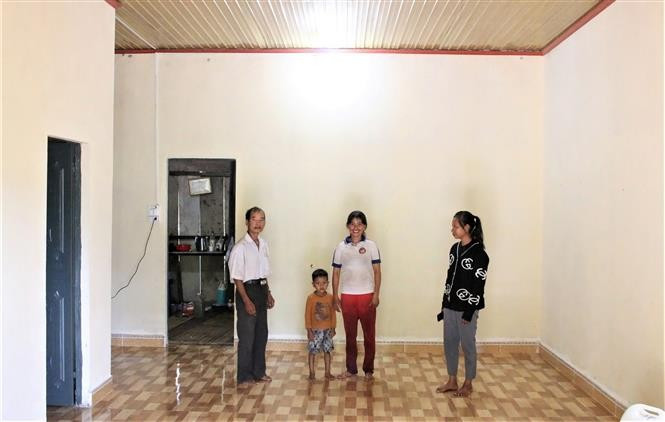
See more

Nguyen Van Dai, Le Trung Khoa sentenced to 17 years' imprisonment each for anti-State propaganda
The People’s Court of Hanoi on December 31 sentenced Nguyen Van Dai to 17 years in prison for “making, storing, distributing, spreading information and documents aimed at sabotaging the State of the Socialist Republic of Vietnam” under Clause 2, Article 117 of the Penal Code.

Vietnam’s Doi Moi success fuels pride among OVs in Malaysia
Tran Thi Chang, President of the Malaysia-Vietnam Friendship Association, said she is particularly struck by Vietnam’s ability to sustain rapid growth while safeguarding its cultural identity and traditional values. Numerous tangible and intangible heritages have earned UNESCO World Heritage status, and the distinct cultures of Vietnam’s 54 ethnic groups remain protected and upheld, contributing considerably to national progress.
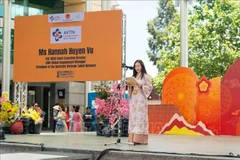
Vietnam's outreach to overseas community signals open policy shift: AVTN President
Talking with the Vietnam News Agency (VNA) in Sydney, Vu said seeking OVs’ feedback on Party resolutions, 14th National Party Congress’s draft documents, and major policies and guidelines demonstrates the Party and State’s increasingly “proactive and receptive” stance on listening to their voices.
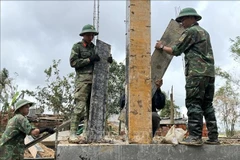
Quang Trung Campaign: Military hands over nearly 400 homes to disaster-hit residents
With the determination that “work does not stop even when it rains,” and with the goal of ensuring all affected families have safe housing before the Lunar New Year (Tet) of 2026, the entire army has so far constructed, repaired, and handed over nearly 400 houses, with absolute safety guaranteed.

OVs bring ‘new momentum’ to mobilising intellectual resources for national development
The Vietnamese intellectual community in Japan, and overseas Vietnamese more broadly, have responded enthusiastically to the Party and State’s policies on mobilising overseas Vietnamese resources.
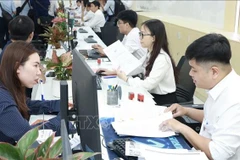
HCM City launches Public Administrative Service Centre
The People’s Committee of Ho Chi Minh City held a ceremony on December 31 to make debut its Public Administrative Service Centre, marking a significant step forward in advancing administrative reform and building a modern, efficient and people-oriented public administration.
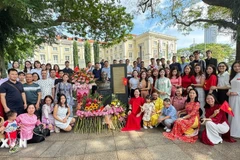
Broader consultation policy with overseas Vietnamese receives positive response
According to Ho Quynh Lan, leader of the Vietnam Business Association in Singapore and deputy head of the liaison board of the Vietnamese Community in the city-state, the Party and State’s decision to open broader channels for policy consultations demonstrates greater openness and democracy of the Vietnamese Government.
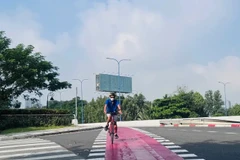
HCM City opens first bike lane along Mai Chi Tho street
Once operational, the dedicated bicycle lane is poised to function not only as transportation infrastructure but also to enhance environmental quality and foster a more civilised urban mobility landscape in Ho Chi Minh City
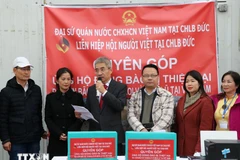
OVs translate nation-building aspirations into tangible contributions
Ho Ngoc Thang, a former senior specialist at Germany’s Federal Office for Migration and Refugees, said that timely and appropriate guidelines have helped foster patriotism and great national unity, translating OVs’ desire to contribute to nation-building into practical initiatives.
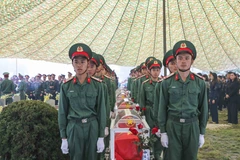
Remains of Vietnamese fallen soldiers, experts repatriated from Laos
The remains were repatriated from Oudomxay province through Tay Trang International Border Gate to Dien Bien province.
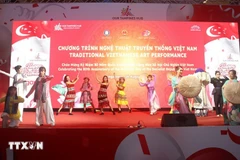
Overseas Vietnamese rally around shared goal of giving back to homeland
The OV community show great enthusiasm when offering input, and many also wish to participate more directly in the country’s development, provided suitable working conditions can be arranged for themselves and their families.
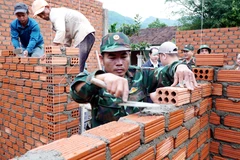
PM orders acceleration of Quang Trung Campaign to rebuild storm-damaged homes
Due to recent storms and floods, a total of 1,597 houses from Quang Tri to Lam Dong were collapsed or swept away and required rebuilding, while 34,759 were damaged and needed repairs.
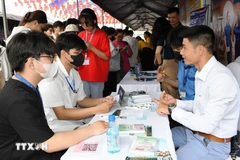
Ho Chi Minh City likely to face shortage of qualified workers in 2026
Labour demand next year is forecast to exceed 313,000 positions, including around 136,340 in the former HCM City area, 105,080 in former Binh Duong, and 72,261 in former Ba Ria–Vung Tau.
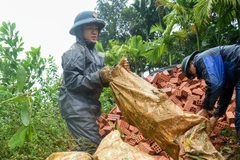
Da Nang completes repairs of all houses damaged by natural disasters
After one month of implementing the “Quang Trung Campaign,” the central city of Da Nang has completed repairs of all houses damaged by natural disasters, demonstrating strong determination and rapid action.
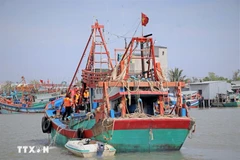
Quang Ngai to offer subsidies for decommissioning, fisheries transition
Vessels measuring from 6 to under 12 metres in length in Quang Ngai will be eligible for support of up to 50 million VND (1,903 USD) each; those from 12 to under 15 metres up to 100 million VND; from 15 to under 20 metres up to 200 million VND; and those 20 metres and longer up to 300 million VND.
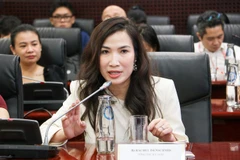
OV community confident in homeland's future: SVEF Secretary-General
Aside from policies and resolutions, the creation of forums and channels through which OVs can contribute opinions to national development reflects the Party and State's consistent viewpoint that the OV community form an inseparable part of the great national solidarity bloc.
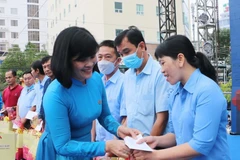
Hanoi to deliver nearly 90,000 Tet gifts to needy people
The Hanoi VFF Committee will advise on and coordinate Tet visits and gift-giving activities by central and city leaders; organise working delegations to deliver gifts under the city’s unified programme; and facilitate connections with businesses and benefactors to mobilise additional support for disadvantaged people.
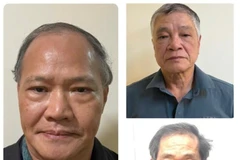
Former Deputy Minister faces prosecution for receiving bribes
Hoang Van Thang, former Deputy Minister of Agriculture and Rural Development, is charged with “receiving bribes.”
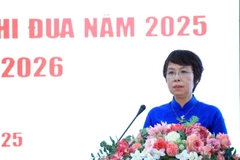
VNA accelerates comprehensive digital transformation, reinforcing role as official news source
Vu Viet Trang, a member of the Government Party Committee, Secretary of the VNA Party Committee, and VNA General Director, commended reporters, editors, technicians and employees at home and abroad for their unity and efforts in overcoming difficulties and fulfilling assigned tasks amid unprecedented changes.
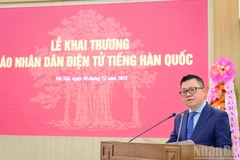
Korean-language version of Nhan Dan Online launched
The launch of the Korean-language version of Nhan Dan Online is a concrete step in implementing the Party’s and State’s policy on strengthening external information work, meeting the requirement on building an official information channel in a widely used language.
